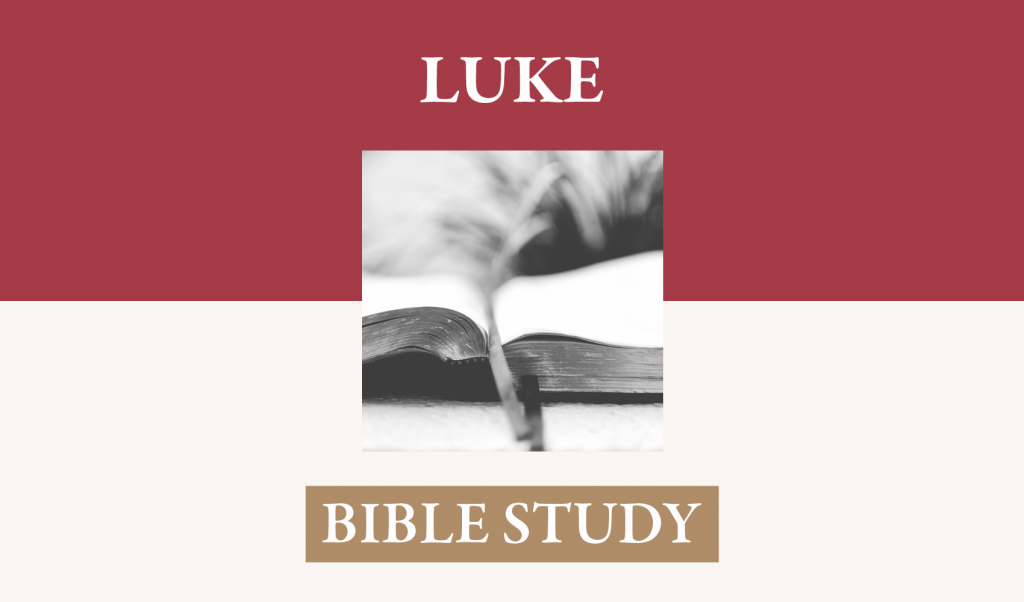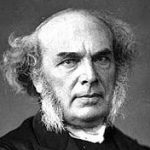Lesson Focus: This lesson, based on the parable of the good Samaritan, emphasizes moving beyond merely knowing biblical truth to seeing needs in the world and putting compassion into action.
Correct Answer: Luke 10:25-28.
[25] And behold, a lawyer stood up to put him to the test, saying, "Teacher, what shall I do to inherit eternal life?" [26] He said to him, "What is written in the Law? How do you read it?" [27] And he answered, "You shall love the Lord your God with all your heart and with all your soul and with all your strength and with all your mind, and your neighbor as yourself." [28] And he said to him, "You have answered correctly; do this, and you will live." [ESV]
[25-26] Luke gives no setting for this event. There is no way to know if this incident followed immediately after 10:21-24 or if some time elapsed. But Luke’s normal usage of And behold suggests a relationship between this event and verses 21-24 where Jesus speaks about the truth of salvation being revealed only to those the Son chooses. The passage begins as a broad discussion concerning salvation, initiated by a lawyer. The lawyer challenges Jesus, to test him. Luke as narrator reveals the question’s motive. The question appears simple, but in fact is theologically complex. The lawyer wants to know what he must do to inherit eternal life. Is the lawyer asking only about getting saved or is he asking a broader question about pleasing God and receiving all that God has to offer him? The historical setting is key as is the phrase’s background. To inherit is to receive something. This request involves the reception of eternal life, which is part of the future world that God brings, and the lawyer wants to be sure to earn it. The lawyer’s question is really this: “What must I do to share in the resurrection of the righteous at the end?” Eternal life is a technical expression for the eschatological blessing of the righteous as opposed to the rejection of the unrighteous. The test was to see if Jesus could correctly answer the fundamental question: “How can I be sure I’ll be saved in the final resurrection?” Jesus responds with a question about the law, which is the expression of God’s revealed will for that time. By responding this way, Jesus identifies Himself not as a radical who wishes to deny the teaching of Jewish tradition but as one who wishes to reflect on what God requires. He sends the lawyer to their shared source of authority: the law, God’s instruction to His people. The deflection of the original question also avoids the lawyer’s test, since now the lawyer will take advantage of the opportunity to give the answer to his own question. There is a note of irony in this reversal: he will expound what stands written by God, because Jesus has asked him for scriptural support. The second question, How do you read it? Asks for specific biblical support and not an appeal to oral tradition.
[27-28] The lawyer answers in terms of what has been called the “great commandment,” a combination of Deuteronomy 6:5 and Leviticus 19:18. One could call this text the “law of love,” since one’s relationships to God and humans are both covered in the command. The essence of pleasing God in Deuteronomy is being devoted to Him. The text in Leviticus expresses a parallel devotion in terms of how one treats others. The lawyer answers the question about receiving life in the future in concrete terms of love and devotion, not in an abstract sense. Both God and humans are to receive love. Such love is not marked by the presence of great feeling but is objectively manifested in considerate responsiveness. This answer does not defend righteousness by works. Jesus’ approval of the answer in the next verse comes because at its heart the answer is an expression of total allegiance and devotion that in other contexts could be called faith. At the heart of entering the future life is a relationship of devotion, a devotion that places God at the center of one’s spiritual life and responds to others in love. The depth of one’s devotion is emphatically underlined by the repeated reference to the various parts of the person that contribute energy to this love. Heart, soul, strength, and mind – the whole person – contribute to this response. Mark and Luke are distinct in having four terms, where Deut. 6:5 and Matthew have three. The elements of a person described by the four terms depict the emotion, consciousness, drive, and intelligence or cognitive abilities. Devotion to God is expressed by devotion to others, so that there is no distinction between devotion to God and treatment of people. They go together. Jesus encourages total love for God and of humankind. Jesus commends the lawyer’s reply as a recognition of the relationship and devotion to God that is the essence of proper response. Jesus encourages the lawyer for seeking to love God and to serve his fellow humans; he is headed in the way of life. Jesus’ answer assumes that the person who loves God will respond to what He requires and be attentive to His teaching. Jesus not only accepts the answer but also emphasizes that the lawyer needs to carry it out. Jesus gives a command and a promise: Do this, and you will live. The present tense speaks of an abiding love and action. Knowledge of what God requires is not enough. Such knowledge needs to be put into practice. Love that comes from the heart responds with the hands. What does such love require of humans in terms of how they see themselves in relation to Jesus and God? This is what the New Testament message is all about, for as Luke has just said, one cannot know the Father except by way of the Son [10:22]. How can one love someone whom one does not know? In the connection of the Father to the Son, one can see that response to Jesus is a part of love for God. In the connection of the Father to the Son, one can see the Son respond faithfully to the Father. The disciple is to follow in Jesus’ footsteps. If Jesus or His messengers bring God’s gospel, then love calls for a response to that message and alliance with Jesus [10:1-24]. The issue of love is key to evangelism. To love God is to be devoted to the teaching and person of Jesus. One may see God’s love in Jesus. Anyone who loves God will respond to His message and, as a result, to fellow humans.
Common Response: Luke 10:29-32.
[29] But he, desiring to justify himself, said to Jesus, "And who is my neighbor?" [30] Jesus replied, "A man was going down from Jerusalem to Jericho, and he fell among robbers, who stripped him and beat him and departed, leaving him half dead. [31] Now by chance a priest was going down that road, and when he saw him he passed by on the other side. [32] So likewise a Levite, when he came to the place and saw him, passed by on the other side.
[29] Verse 29 is a transitional verse which gives the lawyer’s response to Jesus’ command and sets up the parable. The question looks innocent enough. It seems to be an effort to clarify how extensive the demand is that one love one’s neighbor. Given the Jewish restrictions that apply such love only to people of the covenant, the question is a natural one. But Luke’s comment, desiring to justify himself, clarifies how one should judge the lawyer’s question. The implication is clear that the lawyer wished to soften the demand and not feel a sense of obligation to respond. If the demand were expressed softly enough, he could rest in his interpretation. But if challenged, the lawyer would need to examine how he responded in love to God and to people. He would be exposed through Jesus’ demand. In fact, the parable’s layout, with its negative use of the priest and Levite, suggests what the danger is for someone of traditional Jewish religious orientation. It is here that Jesus turns the discussion into a confrontation with broader application than just this religious leader or his circle. Jesus rejects all attempts to shrink the scope of responsibility. The lawyer is looking for the minimum obedience required, but Jesus requires total obedience. That the lawyer seeks the minimum shows that something is wrong in approaching God on human terms and not on God’s. Jesus refuses to allow this limitation. The parable leaves no doubt that the man is challenged by God’s demand. The question becomes whether he loves God enough to respond to His demand. Does he love others by being a neighbor to them regardless of their origin? The lawyer’s question about identifying his neighbor is really an attempt to say there is such a person as a non-neighbor. Jesus refuses to turn people into a subspecies or into things that can be ignored. So His answer to the lawyer is, in effect: “Do not worry about trying to identify who your neighbor is; just be a neighbor to all people, as this Samaritan was.” The scope of the demand is greater than the lawyer might have anticipated. It suggests the need for his fresh response to the command to love one’s neighbor. By choosing the Samaritan as the model, Jesus shows that neighbors may be found anywhere, among any racial group, even in those groups despised by the Jewish leadership.
[30-32] Jesus begins to tell a story about a man who falls prey to robbers. The victim is only minimally described since he is not the focus, those who react to him are. The journey from Jerusalem to Jericho had a reputation for being dangerous. The journey went from almost 2,600 feet above sea level to 825 feet below sea level and was about seventeen miles in length. It was a rocky road winding through the desert and surrounded by caves, which made good hideouts for robbers who laid in wait. To meet such robbers was the fate of this man. The robbery left the man in a serious state, for not only was he robbed, stripped, and beaten, he was also left for dead. What is the reaction to this tragic scene? Who will respond to this man in dire need? The first man with an opportunity to help is a priest. Here is God’s servant who ministers in His temple and represents the height of piety. What will he do? When the priest sees the man, he passes on the other side of the road. There will be no help from the priest. Many motives have been suggested for the priest’s refusal. However, the text gives no motive, nor is it concerned with the reason. The point is that he gave no help. A second Jewish religious leader also comes down the road. He too passes on the other side and offers no help. A Levite was a member of the tribe of Levi but not of Aaron’s family. He was responsible for the less important tasks at the temple and could be thought of as a priest’s assistant. His action is grouped with that of the priest by two terms: likewise … passed by. A second refusal by a supposedly exemplary person is a literary way to speak of a generalized condemnation of official Judaism. The lawyer, as a part of this group, would recognize this. Official, pious Judaism had two tries to respond and did not. The drama remains, “Who will love this dying man?”
Compassionate Action: Luke 10:33-37.
[33] But a Samaritan, as he journeyed, came to where he was, and when he saw him, he had compassion. [34] He went to him and bound up his wounds, pouring on oil and wine. Then he set him on his own animal and brought him to an inn and took care of him. [35] And the next day he took out two denarii and gave them to the innkeeper, saying, ‘Take care of him, and whatever more you spend, I will repay you when I come back.’ [36] Which of these three, do you think, proved to be a neighbor to the man who fell among the robbers?" [37] He said, "The one who showed him mercy." And Jesus said to him, "You go, and do likewise." [ESV]
[33] Everything changes as a new man arrives on the scene. For a Jew, a Samaritan was among the least respected of people. Such people were unclean and to be avoided. The Samaritan would be the last type of person the lawyer would expect to be the climactic figure who resolves the story. What he likely expected was a reference to an Israelite layperson, thus yielding a story that was anticlerical in focus. Again the parable’s twist in the story is key. It is such a despicable person who helps the man, outshining the exemplary Jews with his sensitive response. It is he who showed compassion to the half-dead man. Here is the essence of being a neighbor: having the sensitivity to see a need and act to meet it. By choosing this example, Jesus may not only be instructing the lawyer but also His disciples about how they had responded to the Samaritans earlier [9:51-56]. Such racial outcasts may respond to God correctly. Enemies can be loved. The account focuses on the Samaritan’s activity as a neighbor, not on his entering the kingdom. While the others scurried past, this man lingered over the one who needed aid.
[34-37] Jesus describes six concrete compassionate actions that the Samaritan undertakes for this man. He (1) comes up to him and (2) binds his wounds. This might have involved the Samaritan’s ripping up some of his own clothes for bandages. As he engages in the process of bandaging the wounds he (3) anoints the cuts with oil and wine. Oil soothed the wound, while wine disinfected it. He may have deprived himself of refreshment in the midst of his journey to care for the man. He (4) loads the man on his own mule, which probably meant that the Samaritan walked from here on. And then he (5) takes him to an inn, where he (6) can provide care and comfort to this man he has just met. He does not dump and run, but stays the night to care for him. As a neighbor, the Samaritan did everything he could. The Samaritan insures the continued care of the man by laying out two days’ wages and offering to pay additional expenses. The innkeeper is to look after the man until the Samaritan returns. The money was enough to take care of the man’s room and board for twenty-four days, since the daily rate for a poor man was about one-twelfth of a denarius. Jesus asks the lawyer’s opinion about which character acted as a neighbor. The expression He chooses to ask the question is significant: which of the men proved to be a neighbor. Compassion, response, and love make a neighbor, not locale or race. Jesus’ question shows what a neighbor is. One should not seek to narrowly define who is a neighbor so as to limit one’s responsibility. The obligation is not to see what can be avoided, but to render aid when it can be readily supplied. The lawyer gives the obvious answer to Jesus’ question, though he cannot bring himself to say “Samaritan.” He focuses instead on the showing of mercy, which was the key to the Samaritan’s exemplary action. The lawyer has seen the point, but has yet to break through his prejudice. So Jesus calls him to respond by following the example of the Samaritan. The present tense of go … do in this command looks at continuous response. The lawyer should be a neighbor like the Samaritan was. Love for God expresses itself in a life that is sensitive to others. This combination is how life is to be pursued and found.
SUMMARY. Luke 10:25-37 is a significant passage about a disciple’s ethics. What kind of action does God require of His people? Disciples are to love God fully and to manifest that love toward others. This is the thrust of Jesus’ reply to the lawyer’s question about participating in the resurrection of the righteous. If the lawyer loves God, he will respond obediently to what God asks of him and will recognize his need to respond to what God teaches, since the Father is seen through the Son, as 10:21-24 just indicated. The outgrowth of that love for God is a response to our fellow humans. We are to love and be a neighbor to those who are part of our lives. Neighborliness is not found in a racial bond, nationality, color, gender, proximity, or by living in a certain neighborhood. We become a neighbor by responding sensitively to the needs of others. Such was the example of the Samaritan, who not only soothed the beaten man’s wounds, but also took him to a place of shelter, cared for him, and made sure his needs were met. The Samaritan cared for a person he had never seen before. Without asking questions, he served a cup of mercy to a person half-dead. By reviving life, he showed life. If we seek to restrict those we serve, we need to hear the lesson Jesus taught the lawyer. The issue is not who we may or may not serve, but serving where need exists. We are not to seek to limit who our neighbors might be. Rather, we are to be a neighbor to those whose needs we can meet.
Questions for Discussion:
1. What does it mean to love the Lord your God with all your heart and with all your soul and with all your strength and with all your mind? What is the relationship between knowledge and love in this statement? Note that the second commandment, love your neighbor as yourself, flows out of the first commandment; i.e., we can only truly love our neighbor as that love flows out of our love for God. What implications can you think of that this truth has for the way you are to show love for your neighbor?
2. What motive was behind the lawyer’s question concerning who is my neighbor? How does the parable of the Good Samaritan answer the lawyer’s question? Who is your neighbor? Note, according to Jesus, your answer to that question depends upon your love and devotion to God in the first great commandment. If your love and devotion to God is weak like the lawyer then you will seek to limit who your neighbor is in order to just do enough to get by. Think about how this truth applies to your obedience to all of God’s commands found in His Word.
3. Jesus describes six concrete compassionate actions that the Samaritan undertakes for the injured man. List the six things. What can we learn from this parable about how God wants us to show love to our neighbor?
References:
Luke, Volume 2, Darrell Bock, ECNT, Baker Academic.
Luke, Robert Stein, NAC, Broadman.

















